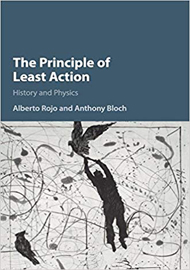
I recommend this exciting book to readers interested in how a small number of principles can explain modern physical theory.
A major part of this excellent physical, mathematical, and historical study of the principle of least action is the exposition of the optical-mechanical analogy that led to the invention of Schrӧdinger’s wave mechanics in 1926. Variational principles highlight the unity of physics as expressed in the language of mathematics. The authors demonstrate in detailed worked examples how these principles developed from the early Greek philosophers to the invention of wave mechanics, quantum field theory, and relativity theory. The reader can follow how Hilbert used the principle of least action to solve the relativity field equations before Einstein.
Containing the mathematical steps of numerous detailed derivations with clearly designed figures to aid the reader, the text is physically and mathematically rigorous and serves as a guide to the next step: the reading of the original papers cited in the references.
Review by Barry R. Masters, Fellow of AAAS, OSA and SPIE.
The opinions expressed in the book review section are those of the reviewer and do not necessarily reflect those of OPN or OSA.
